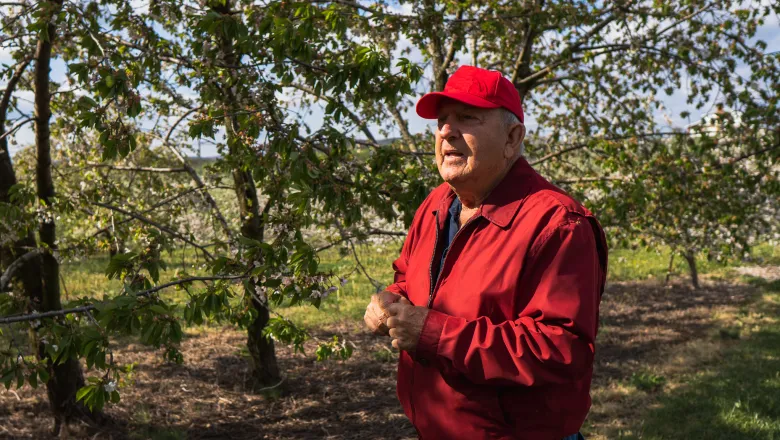Crop Insurance: Protecting the Shanholtz Legacy

Customer Feature Stories
Farm Management Resources
It’s no secret that the business of agriculture comes with significant risk. In addition to changes in market cost, farmers also have to worry about the potential brutality of Mother Nature herself. Weather, disease and pests can all wreak havoc on crops and livestock, affecting both the quality and quantity of each years’ harvest. Crop insurance programs work to provide a critical safety net to the families running these operations. One such family are the Shanholtzes, who own and operate Shanholtz Orchards in Romney, West Virginia.
Purchased in March of 1957 by Garry Shanholtz’s father, the 300- acre orchard now supports about 60 acres of apples, 60 acres of peaches and a grove of cherry trees. Most of their apples and peaches are sold as fresh produce, or those that you would find in the grocery store or a farmers market for fresh consumption. The biggest risk to their crops has been the potential of a spring freeze, which can kill new buds on the trees. Once the fruit frees bud up, if they are exposed to 26-27 degrees for more than 3 hours, a crop can begin to see damage. Just this year, the orchard saw temperatures of 17 degrees for 48 hours straight at their Romney orchard.

Farm Credit offers several different types of crop insurance for a multitude of agricultural commodities. Multi-Peril Crop Insurance protects producers against losses due to a covered cause such as freeze, drought, excessive rain, hail, disease or wildlife destruction and other potential acts of nature. Producers can select a percentage of their average yield to insure, ranging from 50-80% depending on the commodity. If the harvested yield averages less than their elected guarantee, crop insurance covers the difference. Some commodities offer simple yield coverage while others cover revenue or deviation from market prices. There are many other supplemental options to customize the product to the producer’s needs and operation.
Orchard claims for damage are usually filed early in the year. Once a farmer experiences something they believe will lead to a loss, they file a claim and the evaluation process begins. The adjuster goes through the entire growing season with the operation, from early spring when the buds are just forming until the very last crop is sold. Once it comes time to start picking, the farmers notify their adjuster and they assess the quality while still in the field. At the end of the year when all the crop is sold, production and sales records are factored into the equation to determine the final payout. Due to the volatile weather of recent years, the Shanholtzes typically file a claim every year.

Current Farm Credit records with the Shanholtzes date back to 2005, but they believe they have utilized the program for much longer. Even in the last 17 years, the benefits of having the insurance has far outweighed the cost. Since 2005, the Shanholtzes have paid $130K in coverage, and they have received $1.1M in claims on lost apples. Peaches are not typically insured with as high of coverage; however, the return has still covered the amount paid in premiums. In 2007 alone, there was a significant loss, resulting in $123k in claim payouts on peaches.
It’s hard to predict where they might be without crop insurance, but when asked, Garry chuckled and said, “Well, I guess we might not be here!” It has been a valuable tool in their producer toolbox, allowing Garry and his family to continue to provide high quality produce to the local community and beyond for years to come. “We feel so blessed to live here and look out and see what God made,” said Garry. “We really have been truly blessed.” If you are interested in our commodity insurance program, please contact your loan officer to learn more!